2021 Healthcare Online Review Trends
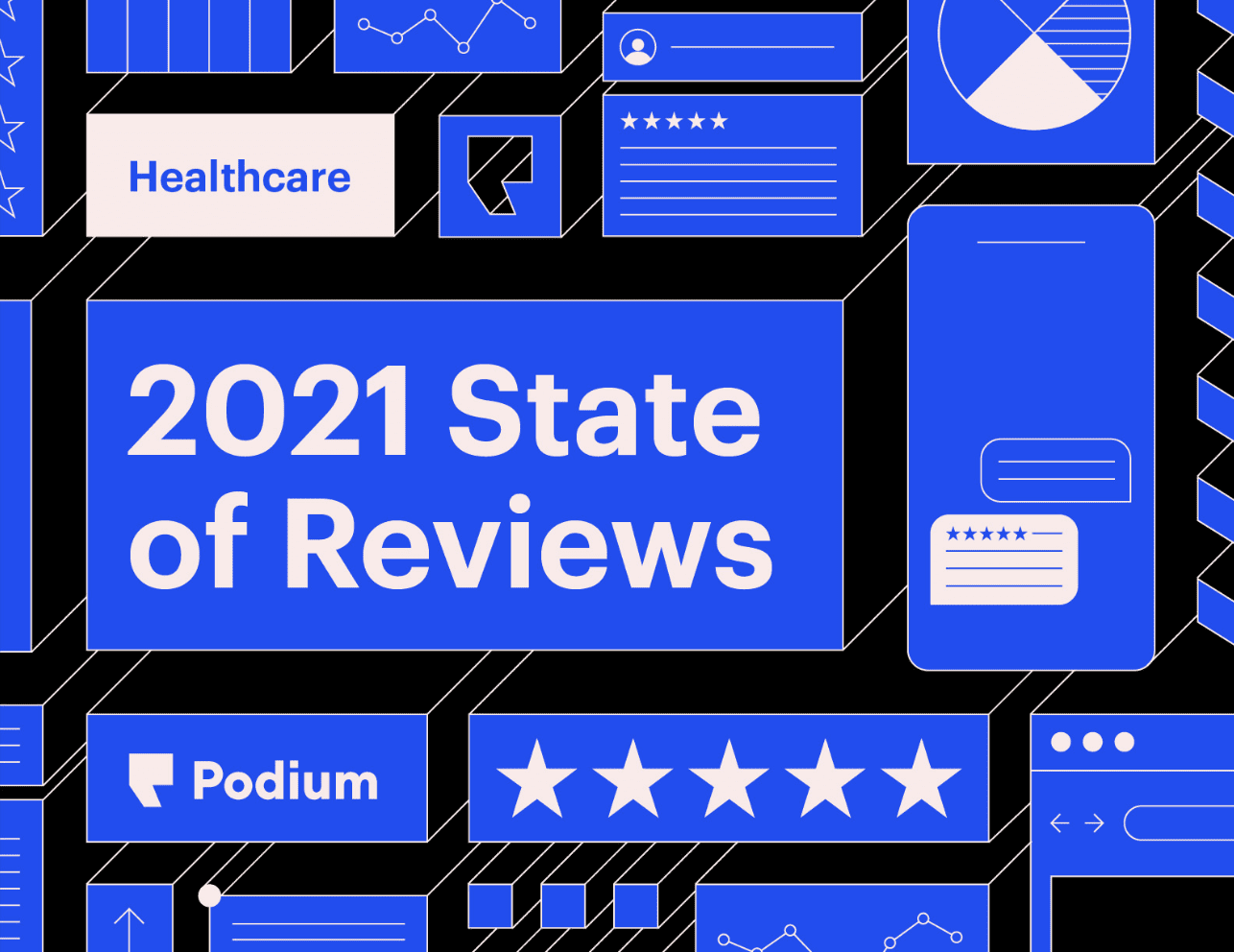
Reviews are table stakes in winning today’s patients.

Reviews used to be a nice-to-have. Now, they’re a make or break in whether a consumer chooses to engage with your practice. Review importance, influence, and consumption are rapidly increasing in consumer mindshare. And patients are turning to them more quickly—and more singularly—than ever before.
Reviews influence 88% of patients in discovering a local business.
31% of consumers say that reviews play a big role in discovering a local practice. Only 12% of patients say that reviews do not play a role in discovering a local practice.
The top characteristics patients say are most important when choosing a local practice are:
Location (67%)
Reviews (54%)
Personal recommendation (42%)
Price or promotions (39%)
Reviews are 3.2x more likely to be an important factor in choosing a local business than loyalty, and 15.8x more likely to be an important factor than traditional marketing.
Almost 53% of patients used reviews in their decision-making when they last chose a local healthcare business.
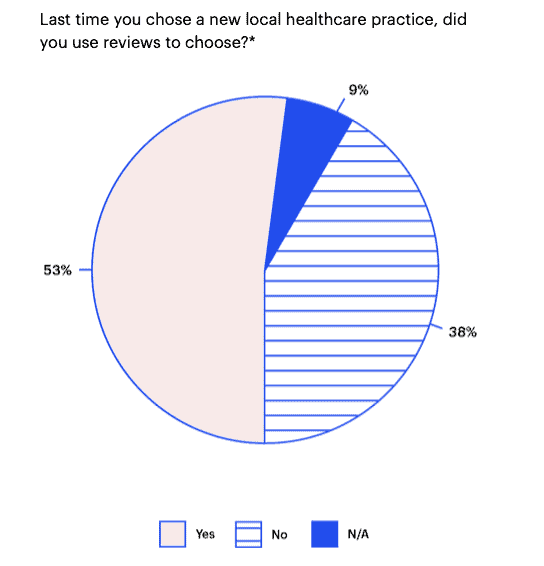
Most consumers have read a review in the last week.
23% have read an online review in the last day.
46% have read an online review in the last 3 days.
65% have read an online review in the last week.
85% have read an online review in the last month.
94% have read an online review in the last year.
Approximately half of consumers are willing to travel farther and pay more in order to patronize a business with higher reviews.

28% of consumers say they have looked up a business’s reviews while standing or being parked right outside to decide if they should go in or not.
Patients aren’t just looking for five stars.

When patients search for a business online, they’re not just looking for five stars—it’s not that simple anymore. Consumer behaviors around finding and choosing local healthcare businesses online have become incredibly nuanced. Practices need five stars and review quantity, quality, consistency, relevancy, and diversity to increase patients.
Although they are not enough on their own, high average star ratings are still the baseline required to compete.
38% of consumers require at least a 4-star average rating to consider engaging with a business.
Only 9% of consumers would consider engaging with a business that had a 1- or 2-star average rating.
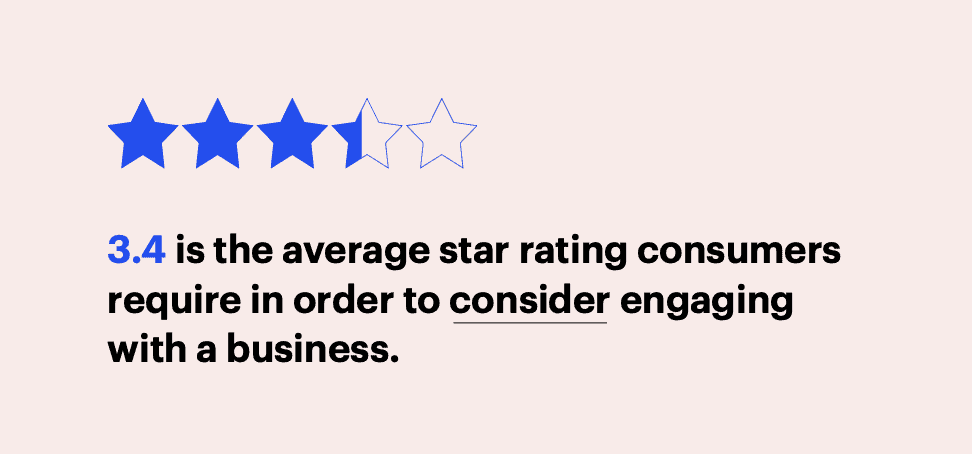
83% of consumers agree or somewhat agree that reviews must be recent and relevant in order to care about them. 68% of consumers agree or somewhat agree that they don’t trust a high review rating unless there is a high quantity of reviews.
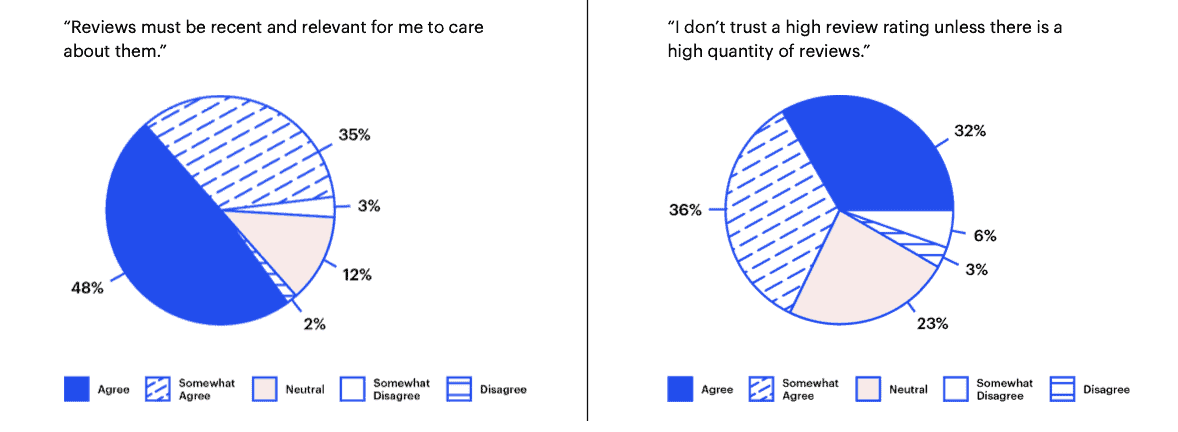
56% of consumers say that a business’s responses to reviews have changed their perspective on the business. Consumers consider how businesses respond to reviews when making purchasing decisions. Business responses offer insight into how responsive, responsible, and caring a business is. Responses tell the consumer how the business is going to treat them.
Patients use a variety of different review sites and search engines to make their decisions.
However, patients are more than twice as likely to turn to Google to discover and choose a local practice than any other site, followed by social media (29%) and WebMD (28%).
And the evaluation doesn’t end there. Before visiting a new healthcare practice, 52% of patients search in Google or “Google Maps” and 41% search on healthcare review sites.
Most patients engage with practices via mobile.
Over 67% of patients are likely to engage with your practice using a mobile device compared to 33% who would engage via desktop.
COVID-19 has created opportunities to win new patients online, but it has also created new consumer expectations.

COVID has provided new opportunities, but has also come with new expectations. If you tap in to customer needs and your reviews reflect the characteristics your patients care about now, you can edge out your competitors. If they don’t, your patients will find another practice whose reviews more fully reflect the experience they want to have.
Since COVID-19, patients are on the hunt for local practices who will cater to their current needs.
23% of patients say they have found a new local practice near their home during COVID-19 that they didn’t previously patronize.
45% of patients say they are more likely to look at a local practice’s Google listing before visiting it than they were prior to COVID-19.
Consumers want local businesses to succeed and are willing to show support through review behavior.
41% of consumers say they are more compelled to patronize local businesses since COVID-19, vs. 14% who say they are less. 45% of consumers would consider refraining from leaving a negative online review (when they normally would have) because they want to try to be more understanding of businesses’ operating challenges. 42% of local businesses say their online reputation has gotten better or much better since COVID-19, vs. 7% who say it has gotten worse or much worse.
After COVID-19, patients are looking for these specific factors when choosing a practice: good customer service, cleanliness, and quality of service or products. Almost 50% of consumers are also reading reviews to validate local businesses’ safety practices.
Patients are much more likely to consume reviews than create them.

The vast majority of consumers leave a business review once a quarter, or less. And a fifth say they’ve never left one. While consumers read reviews regularly, there is clearly a barrier to creating reviews that local businesses must breach. Healthcare businesses need to rethink how they ask for reviews and eliminate any factors that might be preventing their patients from leaving reviews, both positive and negative.
Many consumers (81%) leave a business review four times a year or less. 20% say they have never left a business review.
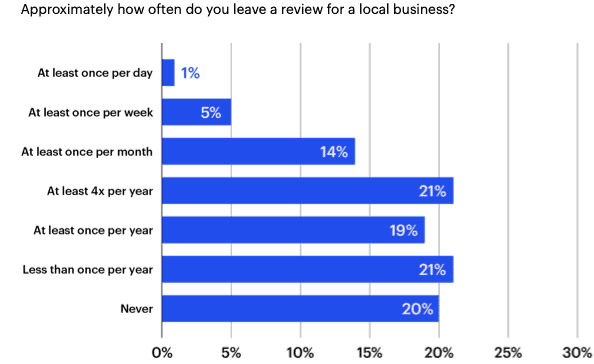
After having a good experience with a local business, consumers are 12% more likely to leave a review if they see a sign asking them to—and 36% more likely if they receive an email invite to leave a review.
41% of consumers say that text is their preferred way to communicate, vs. 18% who prefer email. 48% of consumers say they have received a text from a business asking them to leave them a review. 36% of those consumers have left a review based on the text request they received.
When consumers do leave reviews, having a negative experience with employees is the leading motivation to leave a negative review. 85% of consumers say that employee attitude is the most likely motivation for a consumer to leave a one-star review. Having a positive experience with employees is also the leading motivation to leave a positive review.
Local practices feel the pressure and are taking proactive measures to compete online.

Although 67% of local businesses report an average review rating of 4.0+, local healthcare business leaders are feeling the need to improve their online reputation as the market becomes increasingly competitive.
79% of local businesses say they are at least somewhat proactive about their online reputation, with 30% saying they are very proactive.
Local businesses are 1.4x more likely to have an average star rating of 4.5 or higher if they are proactive about their online reputation vs. if they are passive about it. 45% of local businesses say that online reviews are “very important” to their business’s success.
In 39% of SMB local businesses, the Owner/ CEO is held most responsible for their online reputation.
Even in enterprise local businesses, 18% said the same, although Marketing Manager was the most common role held responsible in those larger orgs (24%).
Businesses are more likely to say they respond to positive reviews than negative reviews.
54% of local businesses say they respond to all or most reviews. 16% of local businesses say they rarely or never respond to reviews.
Local businesses are employing varied strategies to try to improve their online reputation.
No one strategy is being used by a majority of local businesses. However, offering incentives to leave reviews is the most common strategy, and only 19% are asking customers to leave reviews by text.
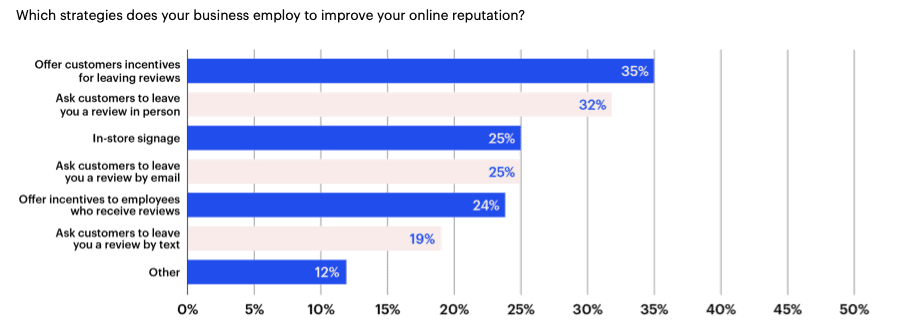
Almost all local businesses using reputation management software say that the software pays for itself.
94% of local businesses who use a reputation management software at least somewhat agree that it provides enough ROI to make up for the cost.
Dominate your local market.
As you read this, people are searching for a practice like yours. The question is, will they find and choose you? Unless you have a competitive star rating with an impressive number of reviews, the answer will likely be “no.”
Become the top-rated option in your area by automatically sending review invites to customers via text, managing your reviews efficiently, and providing a modern patient experience. And do it all from one place with Podium.
This survey was conducted by Survey Monkey Audiences from October 9-October 21, 2020 in the U.S. Audiences surveyed included 1543 consumers (age 18-99+, all regions), 455 SMB owners or managers, and 378 enterprise business leaders in businesses with a local presence. When indicated, statistics are taken from a healthcare specific survey conducted from December 9-December 10, which included 528 consumers of the same demographic.